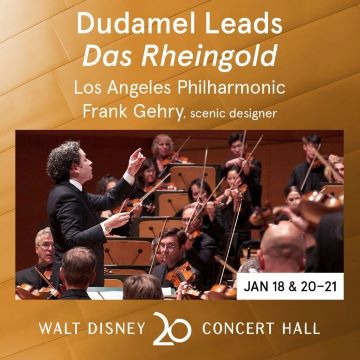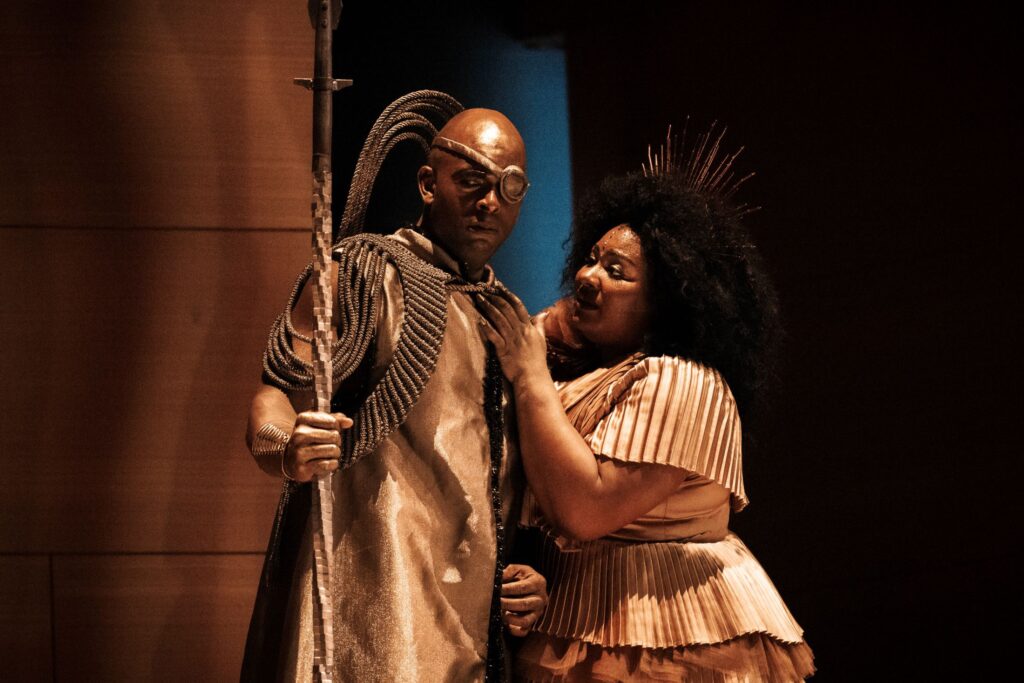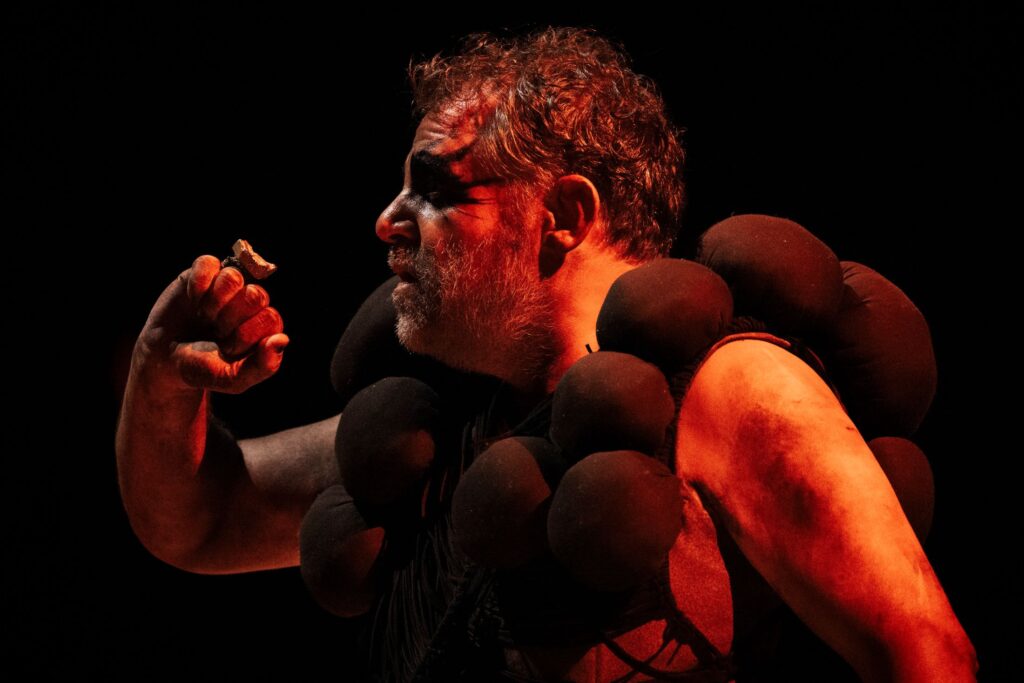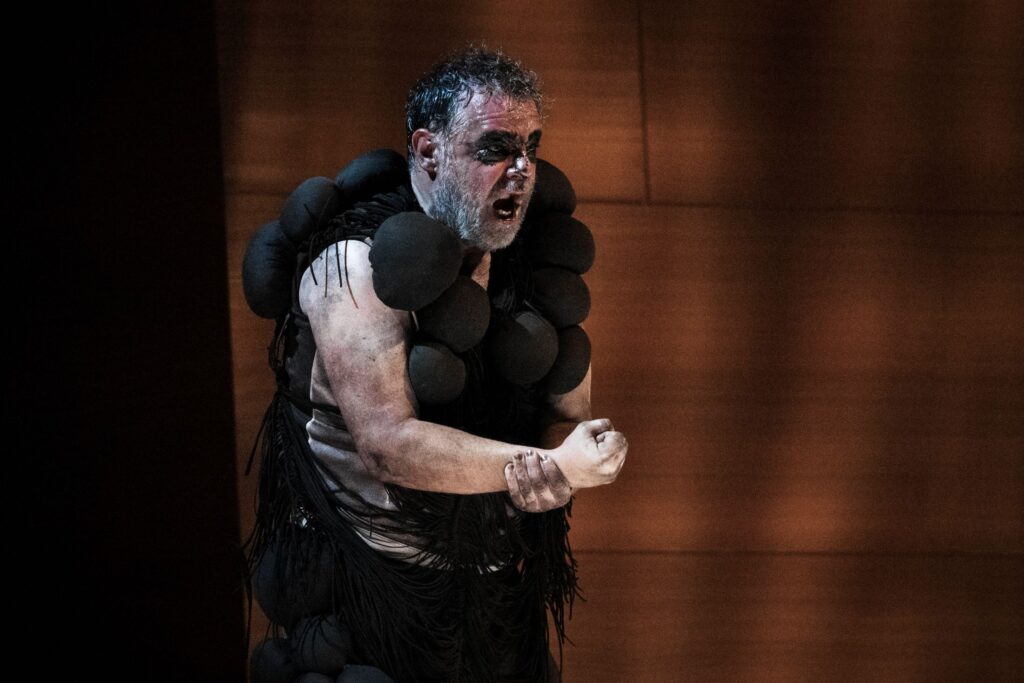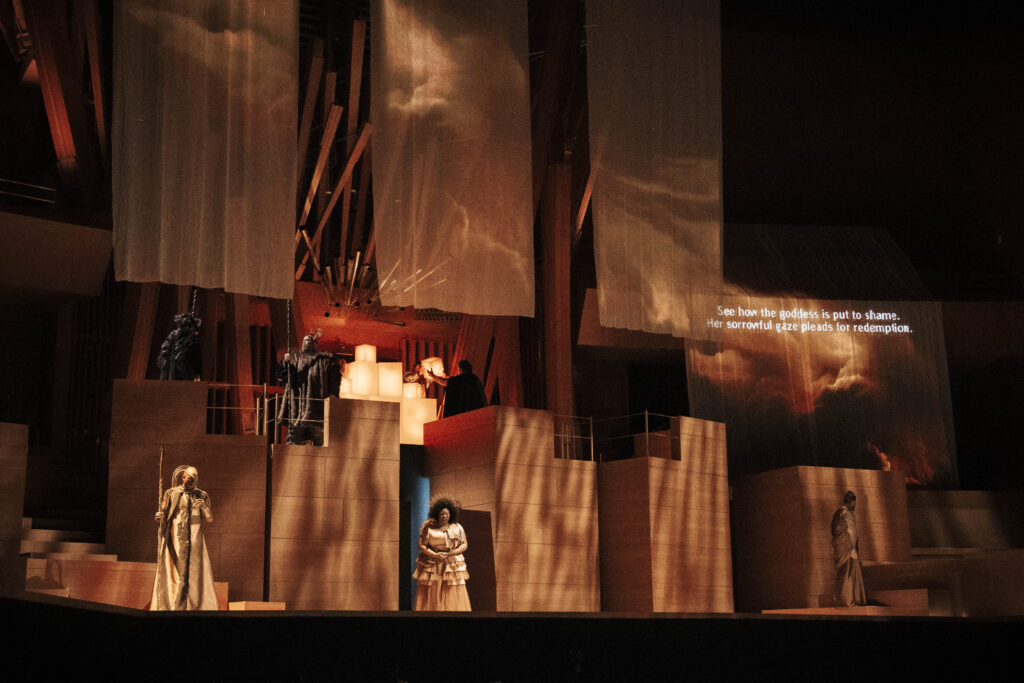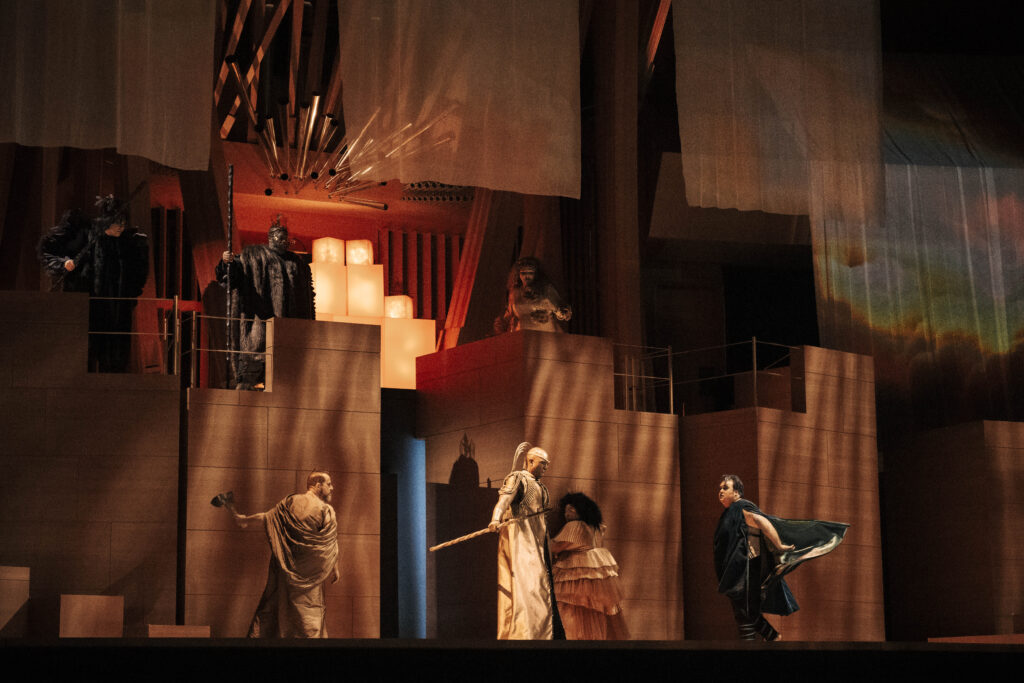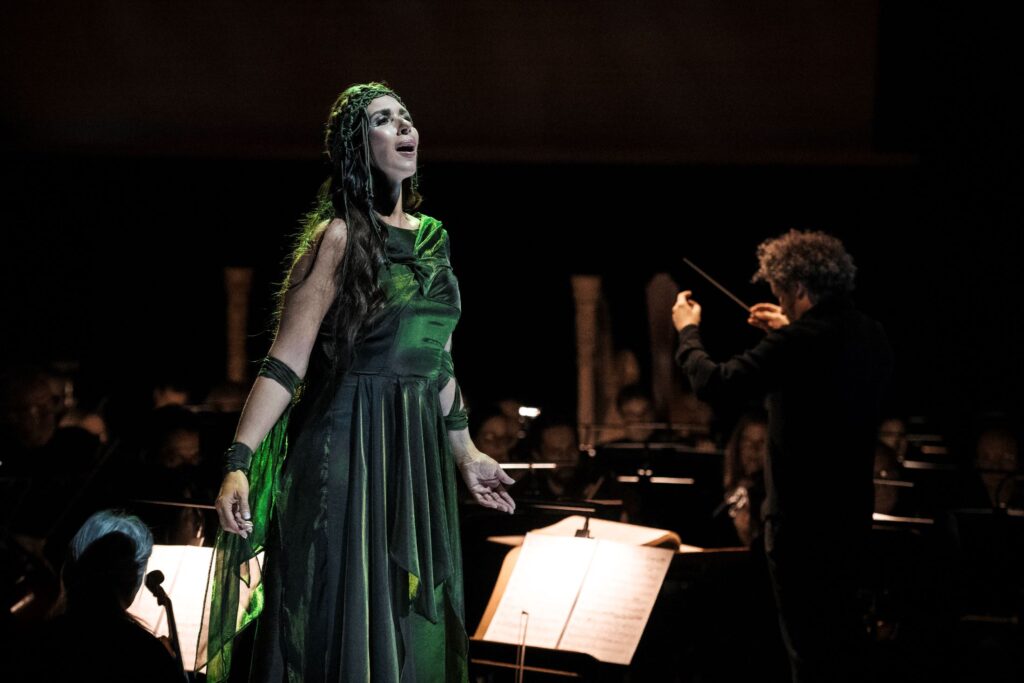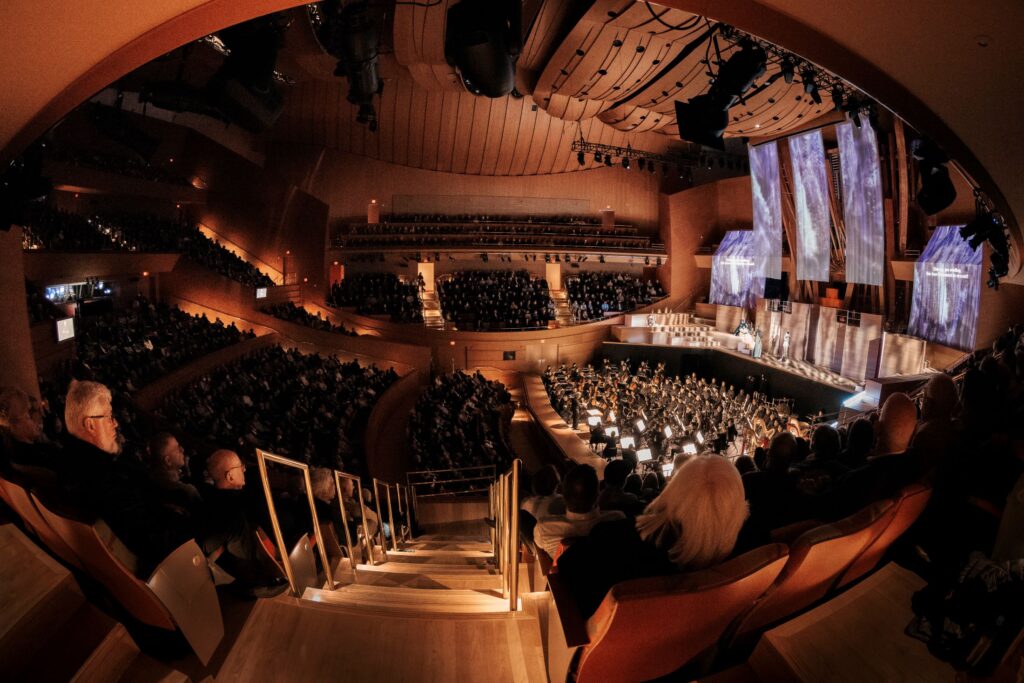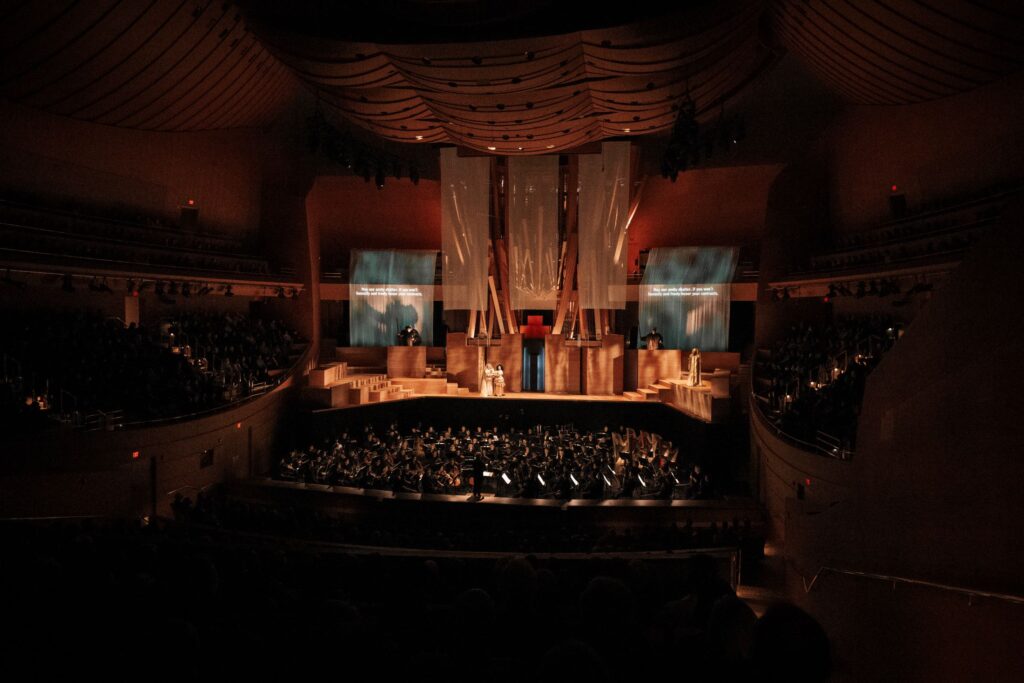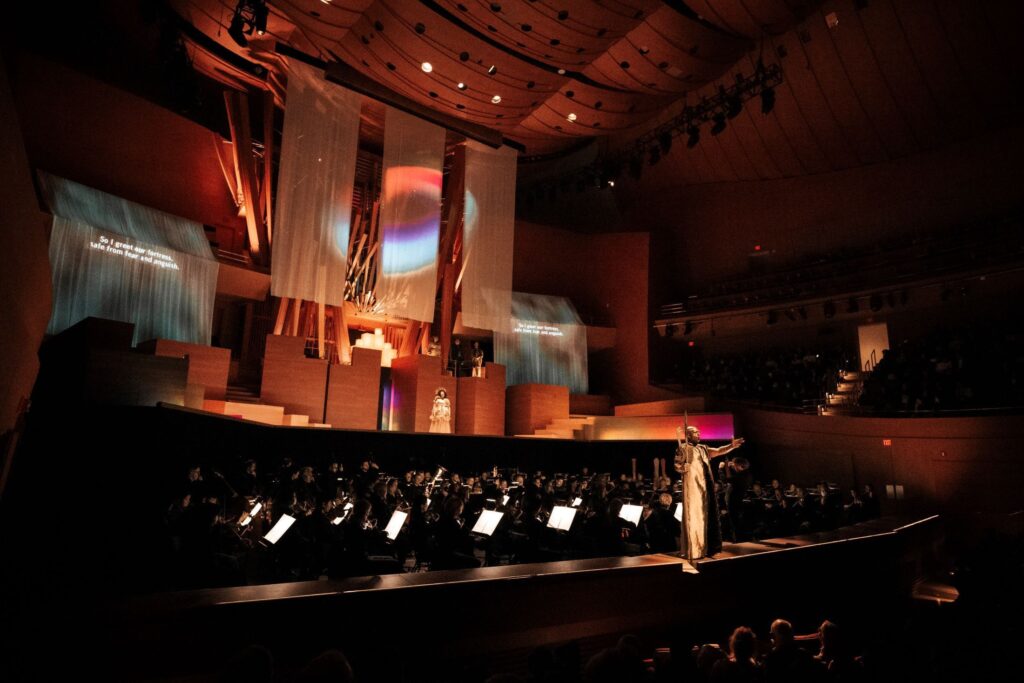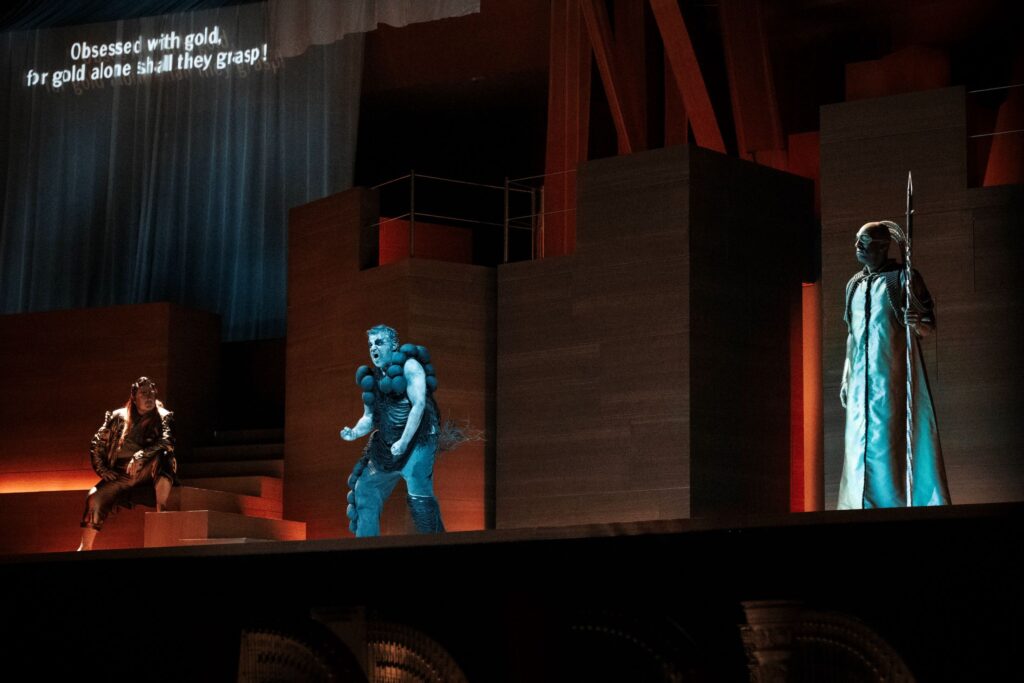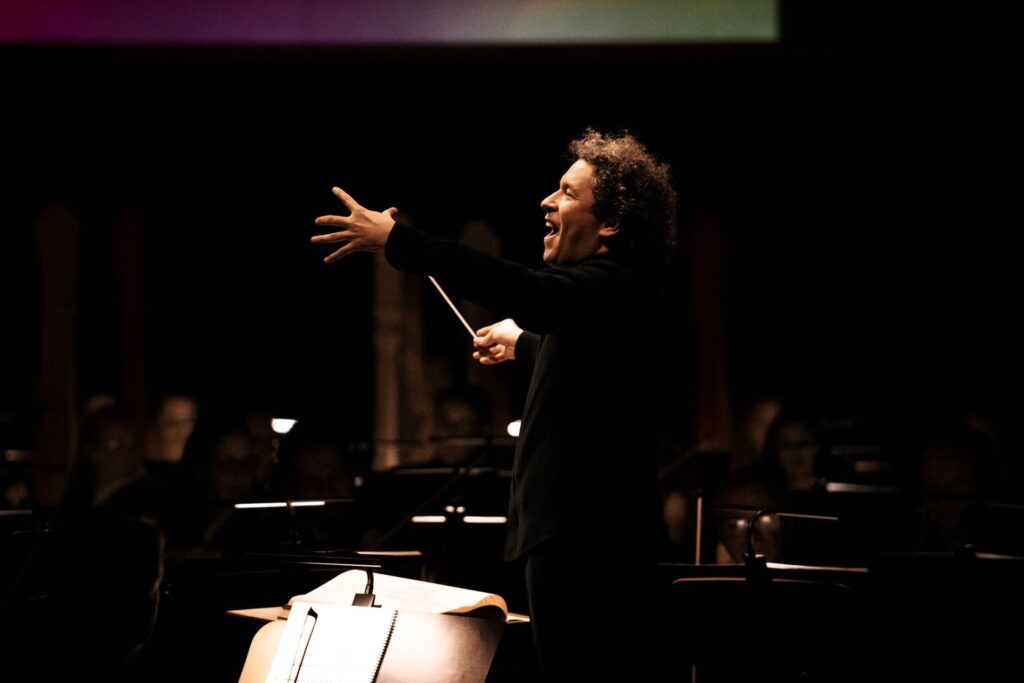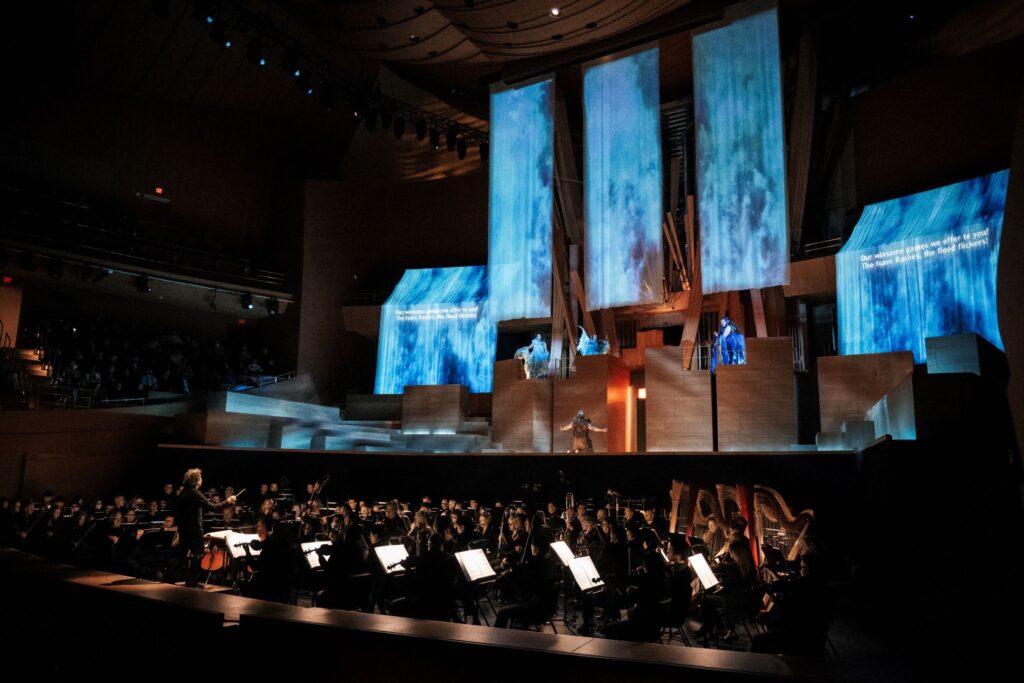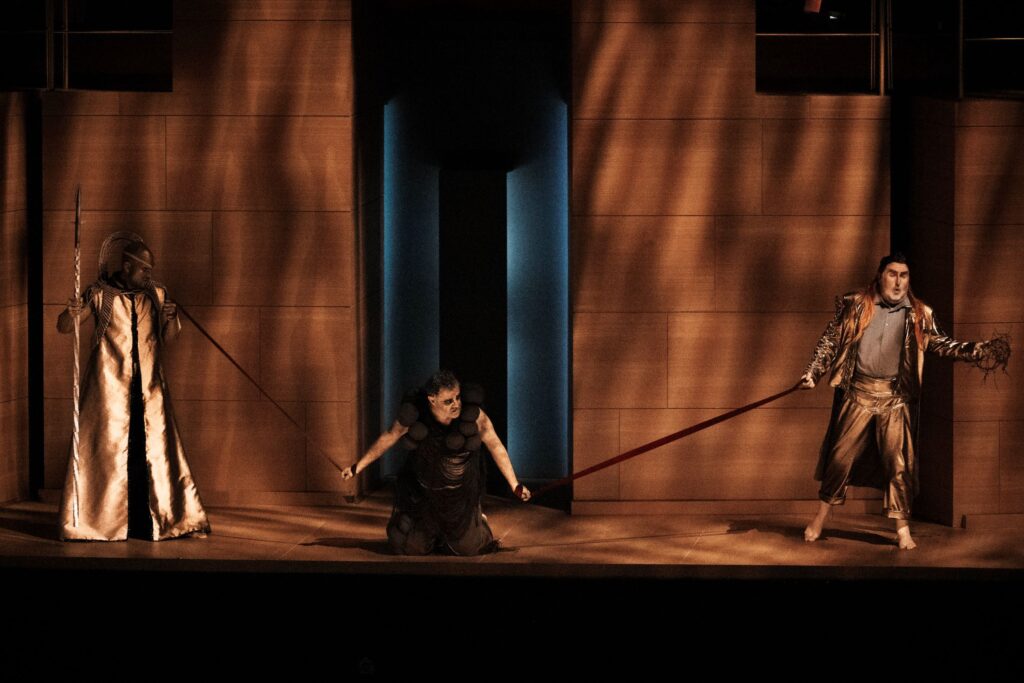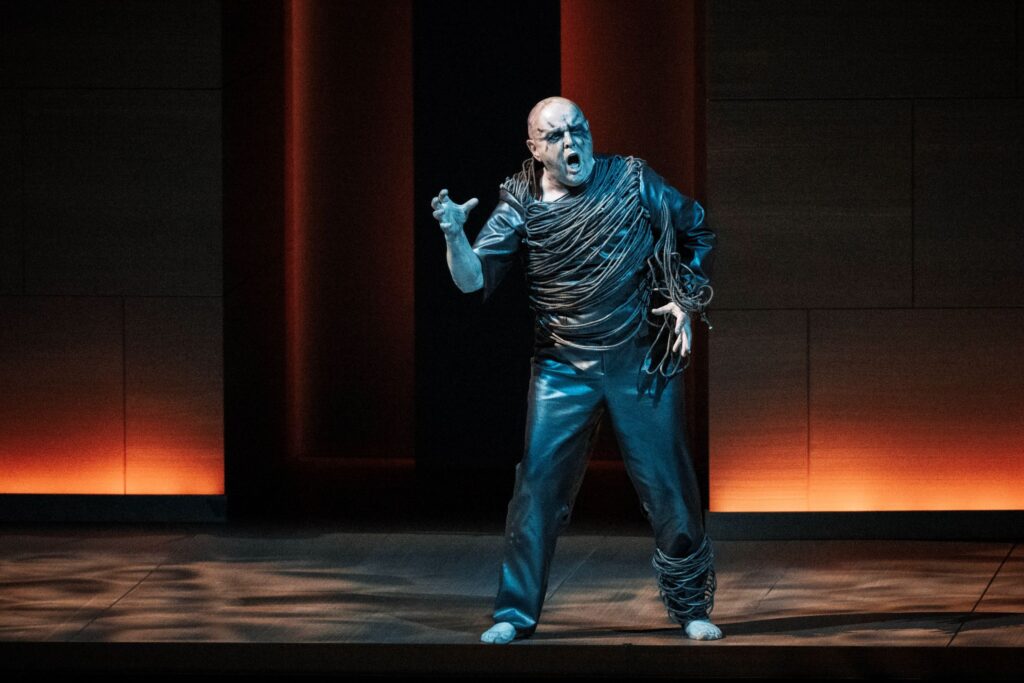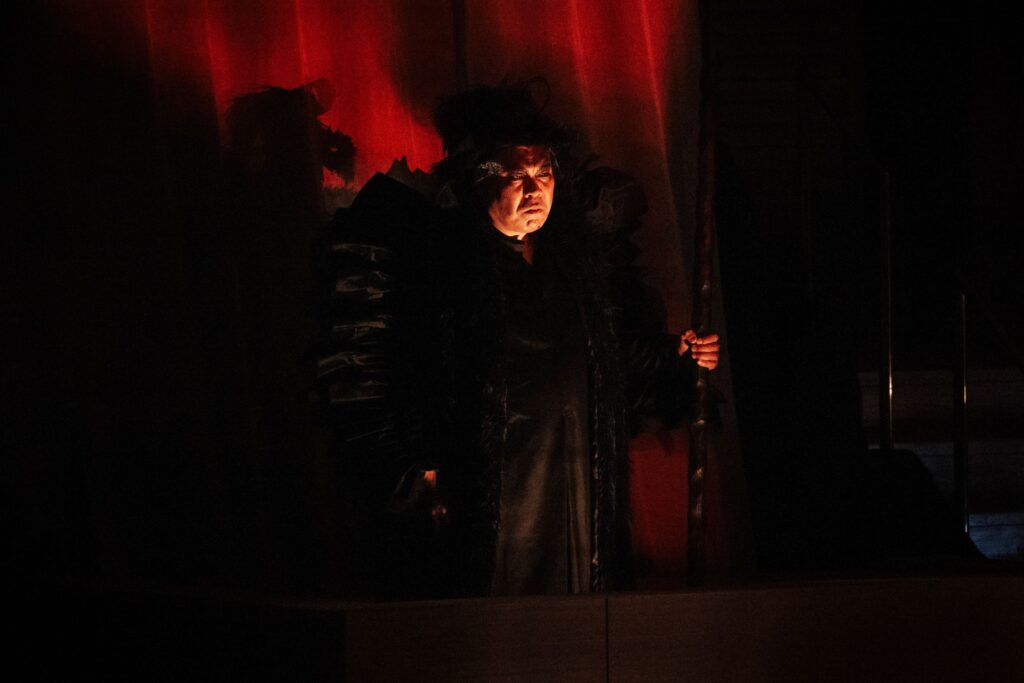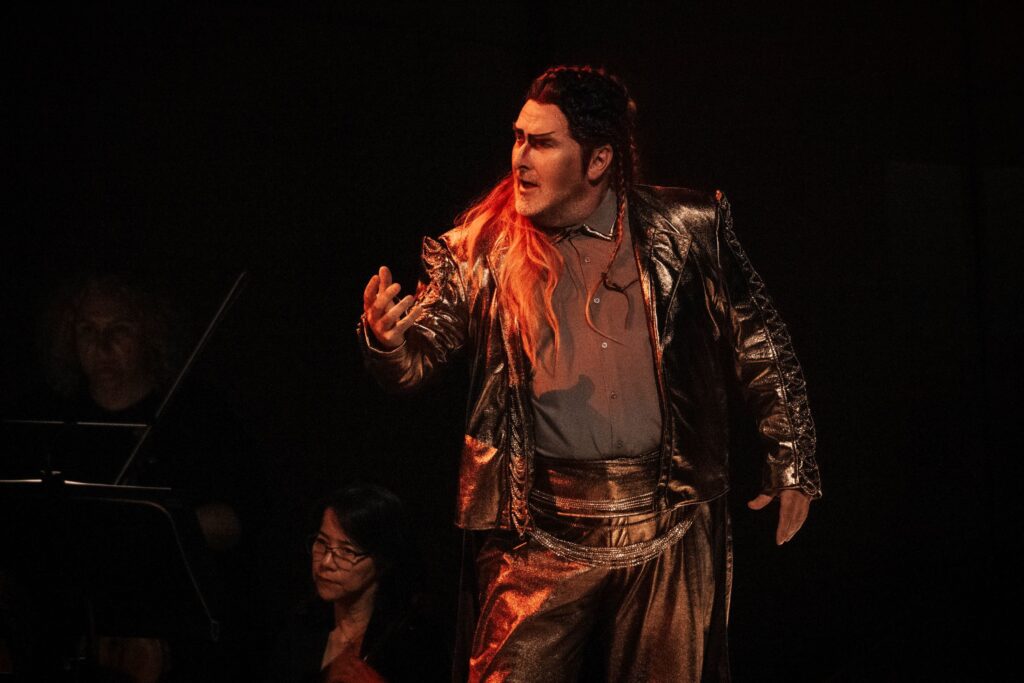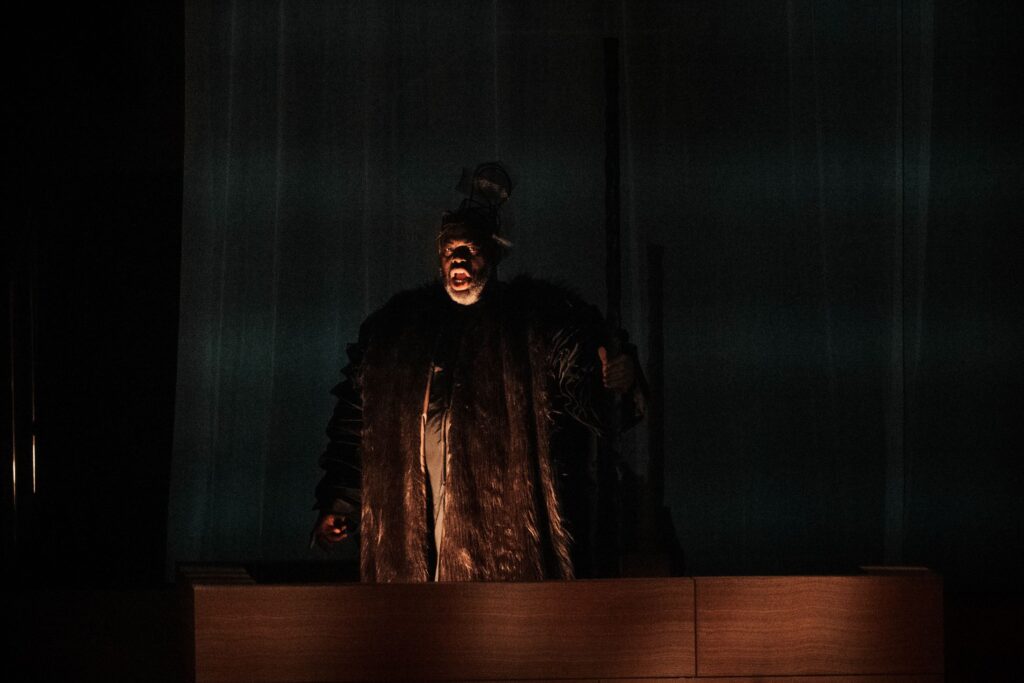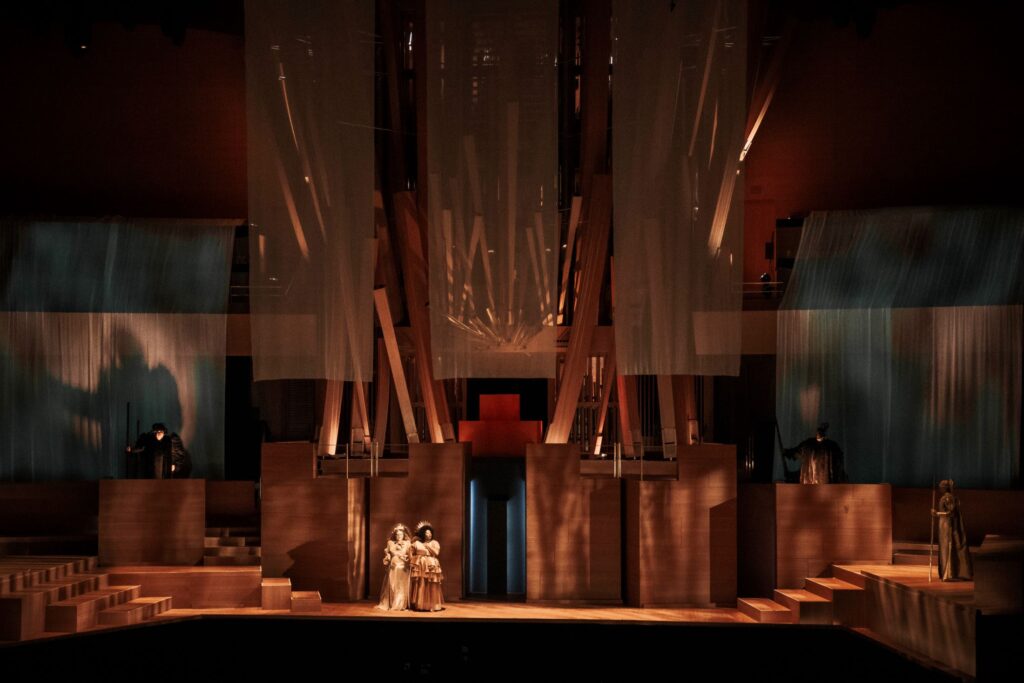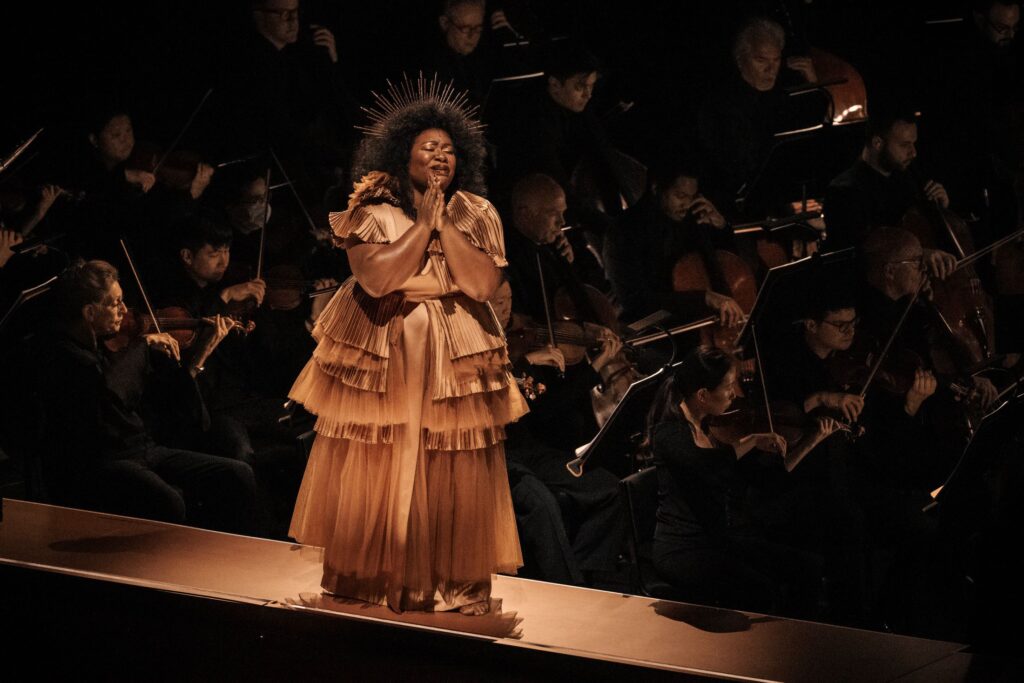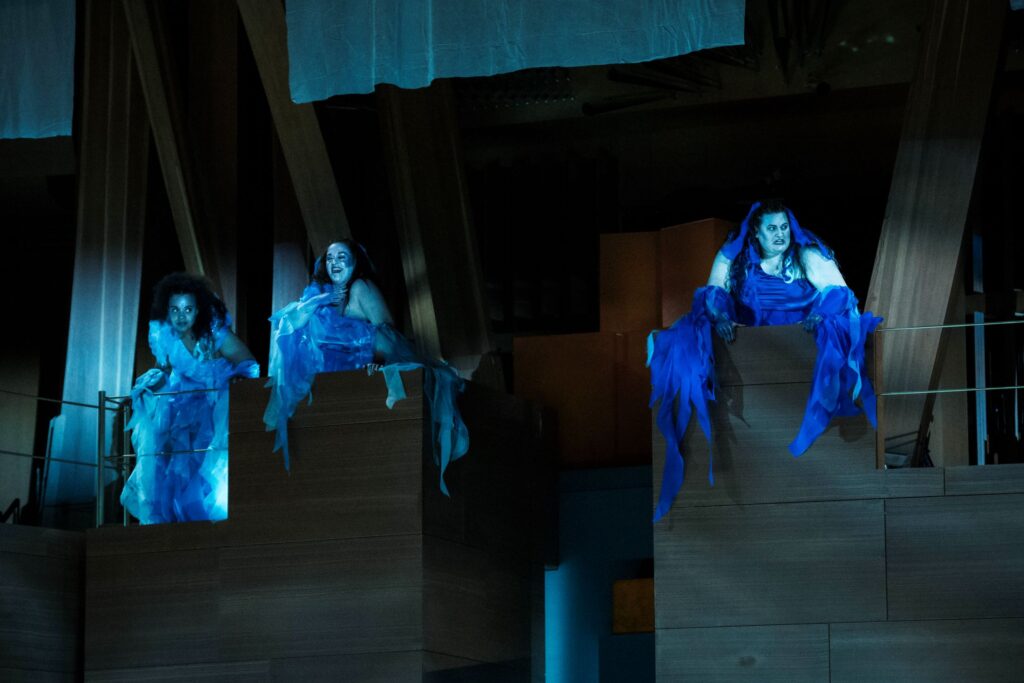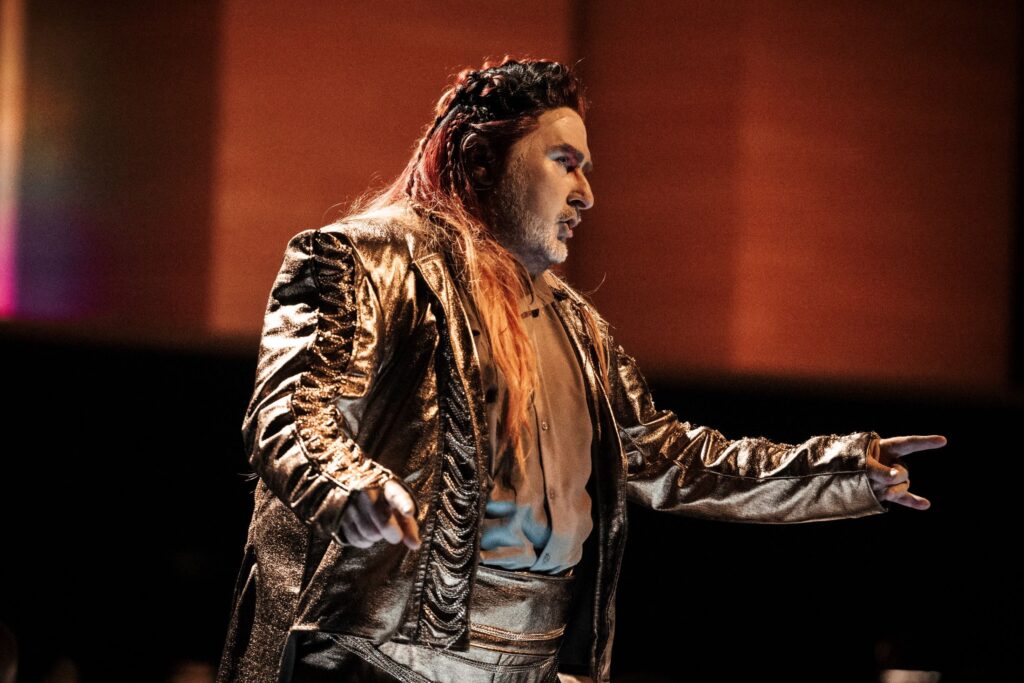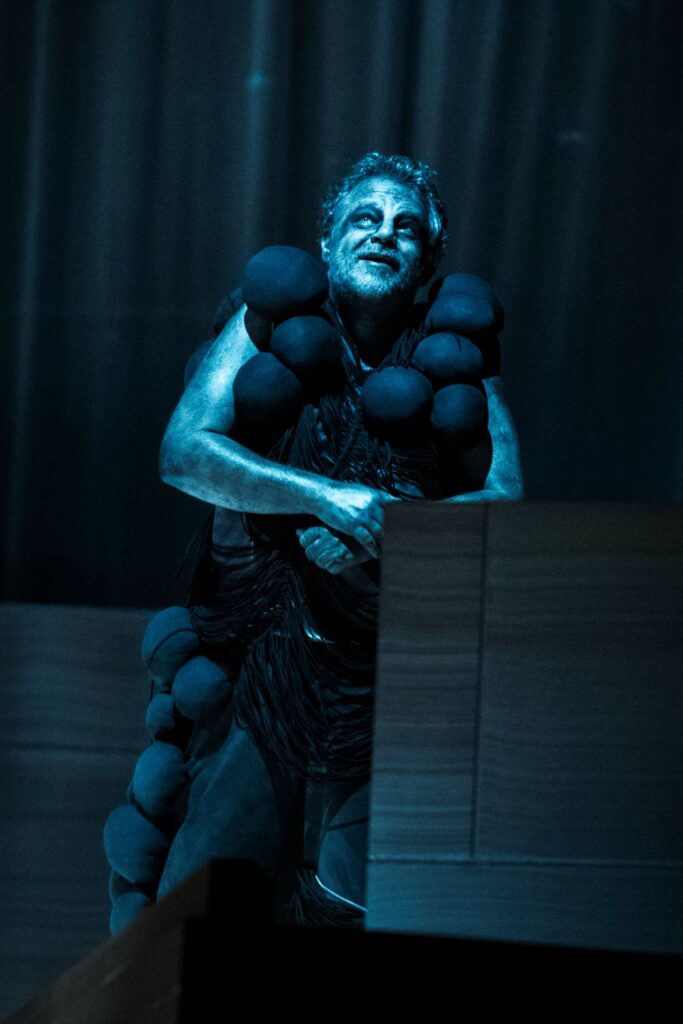AMID SOME LESSER JEWELS,
THERE’S GOLD IN DISNEY HALL
The Los Angeles Philharmonic brought the full gamut of its immense resources to bear on a weekend-long production of Wagner’s Das Rheingold. That includes an expanded orchestra conducted by Gustavo Dudamel, a cast of internationally renowned singers, and new stage design that significantly improves the Phil’s ability to turn a concert version of an opera into a fully staged production. While the story, music, drama, and scenery didn’t always fit together in a complex and harmonious whole, as Wagner intended, the two-and-a-half hour intermission-free “landmark production” (as per the Phil’s press) is indeed notable. Not, perhaps, for all the reasons they thought. The orchestra, as amazing as usual, was far from being the star; the costumes were vivid and evocative but the set by by Frank Gehry was not; and lighting effects don’t conjure up a fantasy world. What impressed me most were the singers, who were not only dramatically sound but enunciated beautifully and sang loud enough for Valhalla to hear them. It was because of the 14-member cast that this salvo to Wagner’s four-opera cycle Der Ring des Nibelungen. was — for this newbie — a fascinating event.
Richard Wagner’s epic fantasy features a cast of gods, giants, dwarves, and nymphs, a plot contrasting love and beauty with power and wealth, and some of the most evocative music ever written. The narrative arc of Das Rheingold is beautifully constructed, beginning and ending with the Rhinemaidens (soprano Ann Toomey as Woglinde, soprano Alexandria Shiner as Wellgunde, and mezzo-soprano Taylor Raven as Flosshilde) who guard the titular gold. As these river nymphs tempt the lecherous Nibelung, or dwarf, Alberich (baritone Jochen Schmeckenbecher in a warty toad outfit) with their enchanting beauty, they tell him of the gold’s power, which can only be unlocked by the one who renounces all love. To their surprise, the dwarf does so and takes the gold, crafting the ring that gives its name to the cycle. The drama then ascends to the heavenly realm of the gods as they view for the first time the palace built for Wotan (Ryan Speedo Green, a god himself) by the giants Fasolt (bass Morris Robinson) and Fafner (bass Peixin Chen).
As payment, the giants demand the goddess Freia (lovely soprano Jessica Faselt), sister to Wotan’s wife Fricka (mezzo-soprano Raehann Bryce-Davis). Loge, Wotan’s cunning half-divine advisor, persuades the giants to accept the dwarf’s gold in lieu of Freia. Wotan and Loge descend to the nether regions where Alberich lives, abducting him along with his gold. They return to the heavens and trade the gold for Freia, but not before Wotan is persuaded by the earth goddess Erda (an enthralling mezzo-soprano Tamara Mumford) to give up the ring too. As soon as he hands it over, the giants fight for it, Fasolt killing Fafner. Finally, crossing via a rainbow bridge built by Froh (tenor John Matthew Myers) in the aftermath of a storm created by Donner (bass-baritone Kyle Albertson), the gods enter Valhalla.
This fully staged production at Disney Hall features a set by Frank Gehry to match the hall he designed twenty years ago; not only is it notable for its plethora of playing levels and its architectural splendor — simple yet stunning — it shows just how an area usually reserved for orchestra and rear-view seats can be so radically altered to befit an actual production. And, it seems, that after the set is struck, it can be reused and probably reconfigured for future events, opening up the possibility of more shows here (including the once-planned Sunday in the Park with George that was scrapped due to COVID). It’s just another legacy that Artistic Director Gustavo Dudamel will leave behind when he soon departs L.A. for a permanent post as Music Director of the NY Phil.
Also notable were the updated translations from German to English by Cori Ellison, who accumulated an amusing agglomeration of alliterations in place of prosaic primitive phlegmatic prose (“Greedy Gang of No-Goods”). As refreshing as the libretto was, what knucklehead had the idea of projecting supertitles on translucent drapes that hung on either side of the stage?! As difficult as they must have been to read from the orchestra, from my vantage point looking over the playing area, it gave me a neck, eye and brain ache. I was forced to look at the supertitles over the heads of the patrons in the top balcony and squint at the tiny letters, keeping me from watching the show. Let me just credit director Alberto Arvelo for that decision. He also knew where to place the singers for maximum vocal effect, including the use of a narrow walkway ringing the “pit”, but not so much for drama. What did work on the behemoth sheets hanging from the ceiling were the videos of rivers created by Jorge Chacin, Nascuy Linares, Gabriela Camejo and Arvelo. The famous rainbow bridge at the end was a dud.
I must commend lighting designer Rodrigo Prieto for his use of shimmering fluorescent tubes from the floor, bathing the organ in spotlights for Valhalla, and gold bars of varying size lit from inside — approximating Day of the Dead luminaria bags — but even with some splendid work, the mythical world of Das Rheingold did not spring forth. For that, and for the fantastical elements of the opera, we can look to costume designer Cindy Figueroa, who offered textured outfits in metallic sheens of olive, rust, black, and dark peach. And if Figueroa did the make-up as well (there is no credit), then she, more than most working on this production, showed what could be done in a concert setting.
I love me my Dudamel, but he had sort of a muted approach here and I had to really concentrate on the musicians, who were practically in the middle of everything under muted lighting. There is a huge amount of musical material in the score, including dozens of key musical subjects, or leitmotifs. Employed throughout the Ring cycle, they make their first appearance in Das Rheingold, and it was awfully fun trying to pick them out (I believe there are thirty). The Dude made this challenging piece look easy, easily maneuvering those sudden changes in mood, texture, dynamics, tempo and character. And for an opera, to watch the orchestra (there were six harps!) was a treat. Dudamel placed the score’s sixteen anvils within an alcove in the back of the hall, which sent the sounds ringing through the air.
As an introduction to Das Rheingold, this was a knockout evening — the 2 and 1/2 hours were most easy to digest. Yet if this was to be considered a production, it was more like a concert on steroids. Aside from those horrific inexcusable supertitles, I expected more power from the orchestra, and the visuals could not live up to the singers. It was they who were the gold in a vast cavern of mineable ore.
photos taken by Timothy Norris at the Walt Disney Concert Hall,
courtesy of the Los Angeles Philharmonic Association
Das Rheingold
Gustavo Dudamel, conductor
Los Angeles Philharmonic
reviewed on January 18, 2024
ends on January 21, 2024
for tickets, visit LA Phil
